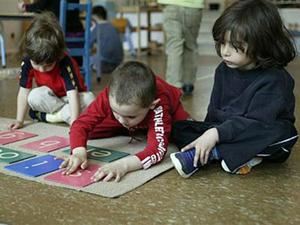By: Sarah Emerson

The recent claims that ‘synthetic phonics’ hold the key to transforming literacy levels in the UK is far from news to those familiar with the approach to language found in a Montessori Children’s House. Sarah Emerson looks at what is meant by this term and how far the Montessori Approach goes to fulfilling the recommendations of the recent research into literacy.
The recent claims that synthetic phonics hold the key to transforming literacy levels in the UK is far from ‘news’ to those familiar with the approach to language found in a Montessori Children’s House. Phonetic reading involves decoding words into their component sounds. To do this, the child needs a thorough knowledge of the sounds of his language and of the symbols (graphemes) for each sound. The research in support of phonics is overwhelmingly convincing. The Johnston and Watson (2005) report showed that children taught using synthetic phonics could read and spell seven months ahead of the norm, and this level of achievement was sustained by the children involved over a number of years.
The key to the success of synthetics phonics is that in learning how to recognise and blend sounds, the child acquires a skill that he will be able to use whenever he encounters a new word in the future.